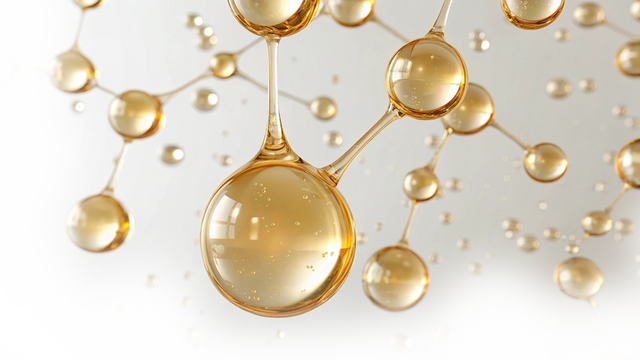
Panel discussion on...
Peptides
Emerging Trends in Peptide Use: Innovations and Applications
What are some of the most exciting innovations in peptide technology that you've seen recently?
The most promising innovations relate to the field of peptide delivery systems. Recently the scientists from Beijing Youngen Biotechnology Co.Ltd. described application of plant exosomes for the efficient delivery of cosmetic peptides across the skin barrier (1). Another effective solution suggested by Sederma implies the application of lipid submicron particles for peptide delivery to skin epidermis (2). Both carrier systems comprise biodegradable and biocompatible materials and create opportunities for long-term skincare applications.
How can peptides differentiate themselves in the competitive, saturated anti-ageing market and what unique benefits do they offer that can appeal to modern skincare consumers?
In contrast to multicomponent extracts from different natural sources, peptides are able to ensure selective action as a result of interaction with particular biological targets. Rational modification of their structure permits to increase their activity, stability and ability to penetrate into the dermal skin layer. Synthesis of peptide conjugates with small molecules, such as nicotinic, ferulic and caffeic acid can be applied for their targeted delivery and achievement of synergistic biological action.
Mechanisms of Action of Peptide and Market Perception
Can you explain how peptides function at the cellular level to promote skin health?
There are multiple mechanisms of peptide action depending on their structure and biological activity. Well-known effects comprise the stimulation of matrix proteins and glycosaminoglycans synthesis in the dermis, suppression of interleukins secretion (anti-inflammatory action), anti-oxidant and antimicrobial activity, suppression of proteolytic enzymes, improvement of lymphatic circulation, inhibition of melanin synthesis, etc.
Which specific skin concerns, like ageing (morphological and dyschromic), are most effectively addressed by peptides, and why?
Peptides can compensate the age-related damage of skin proteins in two ways: stimulate their synthesis and protect them from the degradation by proteolytic enzymes. There are many possibilities to modify peptide structure in order to achieve efficient and selective action along with improvement of their penetration and retention in the dermal skin layer.
There’s a lot of hype around peptides. What are some common myths or misconceptions that you'd like to clarify for both formulators and consumers?
There is an opinion that discontinued treatment with active peptide ingredients will result in withdrawal effects. It is not true. Of course, if you stop the treatment, you lose its positive influence and benefits; however, it doesn’t mean that the conditions of your skin will be worse as compared to the beginning of treatment.
What are the key differences between natural and synthetic peptides in terms of efficacy and safety?
There are no differences between natural and synthetic peptides in terms of efficacy. It is not the issue of peptide origin, but the issue of peptide purity and its salt form. In the case of proper quality control and pharmaceutically acceptable counterion the peptide efficiency and safety have to be exactly the same both for the natural and synthetic peptides.
Compared to well-known actives like retinoids or vitamins, how do peptides stack up in terms of long-term efficacy and side effects?
Depending of their structure and proper formulation, peptides can provide benefits of stability and selective action. Moreover, some of them possess antimicrobial action and can replace other preservatives in order to minimize possible side effects. Taking into account that generally their effective dose is rather low, one can expect the minimal risk of side effects development.
Sustainability and Peptides
Sustainability is a growing concern in the cosmetics industry. How are peptide manufacturers addressing this issue?
Due to the high efficiency of cosmetic peptides, the minor amounts of residual solvents have no any real influence in terms of safety for the end user. However, an application of CMR (cancerogenic, mutagenic or reprotoxic) reagents and solvents creates a potential danger for the personnel and environment in the course of peptide production and subsequent utilization of waste. The main trend in this regard is an application of “green chemistry” principles, avoiding the application of “undesirable” solvents and dangerous reagents, such as trifluoroacetic acid.
What role does biotechnology play in the development of sustainable peptides for personal care products?
Most of cosmetic peptides are relatively small molecules (2-7 amino acid residues). Commonly, they contain specific modifications, such as hydrophobic moieties aimed to enhance their penetration into the dermal skin layer. Application of biotechnology in their production seems to be unnecessary or sophisticated. However, it can be useful in the case of more complex cosmetic ingredients, such as SH-Polypeptides. It was postulated that these single-chain peptides produced by biotechnology methods using the cells of tobacco plant leaves are able to stimulate skin cells growth and proliferation. However, their real efficiency in cosmetic formulations should be investigated and proved (3).
What are the environmental trade-offs between sourcing natural peptides from marine or agricultural sources and synthesising them in labs?
Chemical synthesis of peptides is associated with the application of dangerous reagents and production of large amounts of waste organic solvents. It creates a problem of their utilization in order to minimize the possible harmful effects for the environment. However, synthetic peptides possess advantages of the selective and efficient action on particular biological target. In contrast, utilization of marine by-products as the source of cosmetic peptides provides significant environmental benefits. From the other side, extraction process results in the mixture of active ingredients, possessing a wide range of biological activity and exclude the possibility of selective biological action.
How do consumers perceive the sustainability of peptides, and how does this influence their purchasing decisions?
It strongly depends on many factors, such as brand name, the geographic region, the price of the final product, its proper advertising, etc. The advanced category of customers pays special attention on peptide origin (natural or synthetic), its safety and potential impurities, such as chemicals and residual solvents.
Panelists
References and notes
Hou J, Wei W, Geng Z, Zhang Z, Yang H, Zhang X, et al. Developing plant exosomes as an advanced delivery system for cosmetic peptide. ACS Applied Bio Materials. 2024, Apr 10;7(5):3050–60.https://doi.org/10.1021/acsabm.4c00096
Saunois A, Platcheck Raffin R, Rossini K. Criestieli. Submicron particle comprising a peptide active, preparation method and uses thereof, in particular cosmetic uses. EP2024065152, 2024.
Martínez-Carpio P.A. Topical application of sh-oligopeptide-1 and clinical trials with cosmeticpreparations: risk or fraud? Cutaneous and Ocular Toxicology. 2023, 42(4): 190–197. https://doi.org/10.1080/15569527.2023.2234020




































